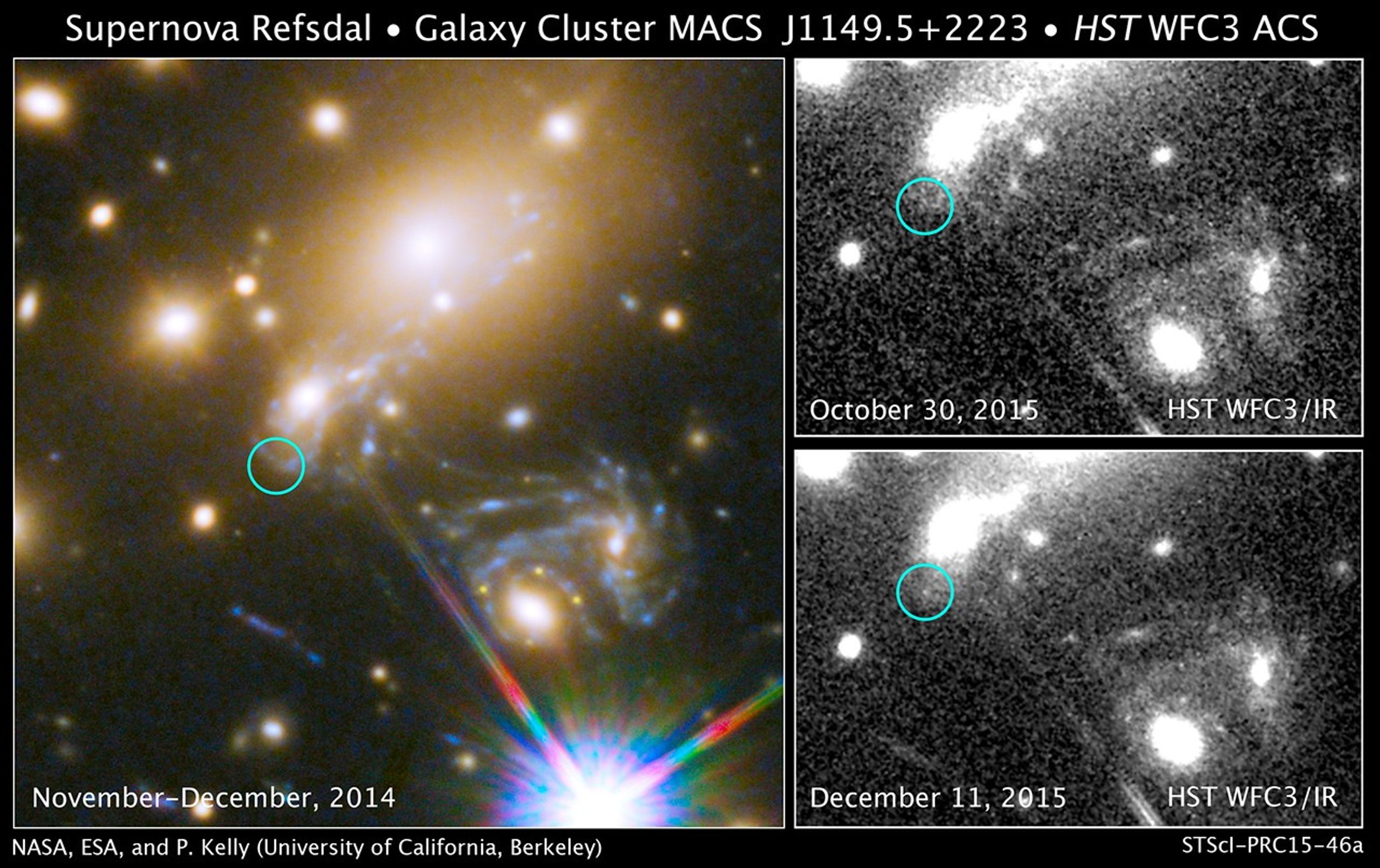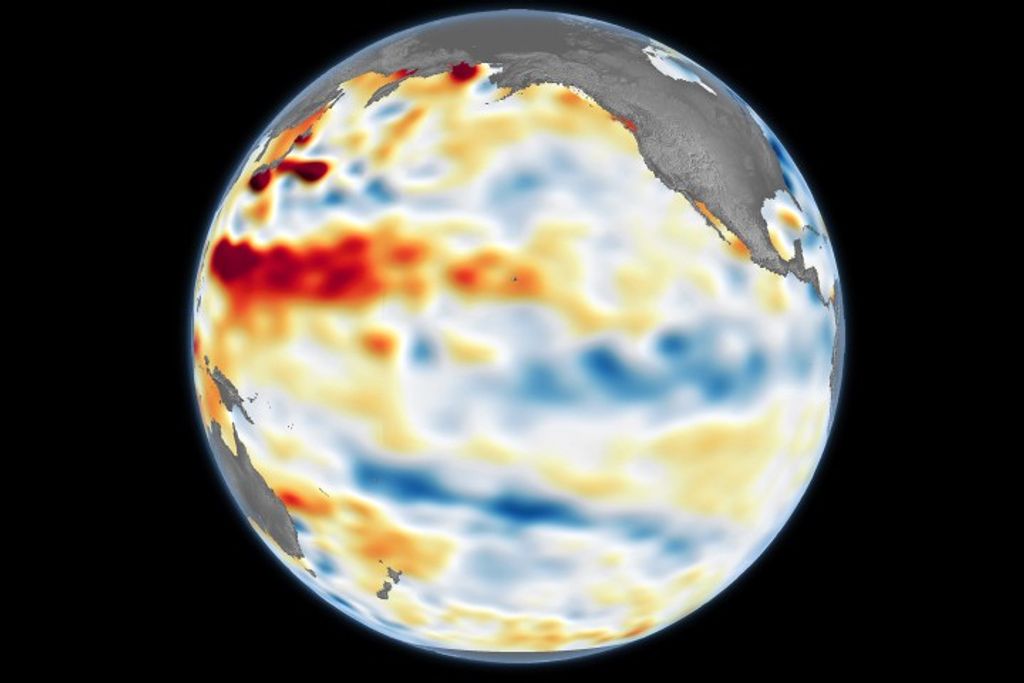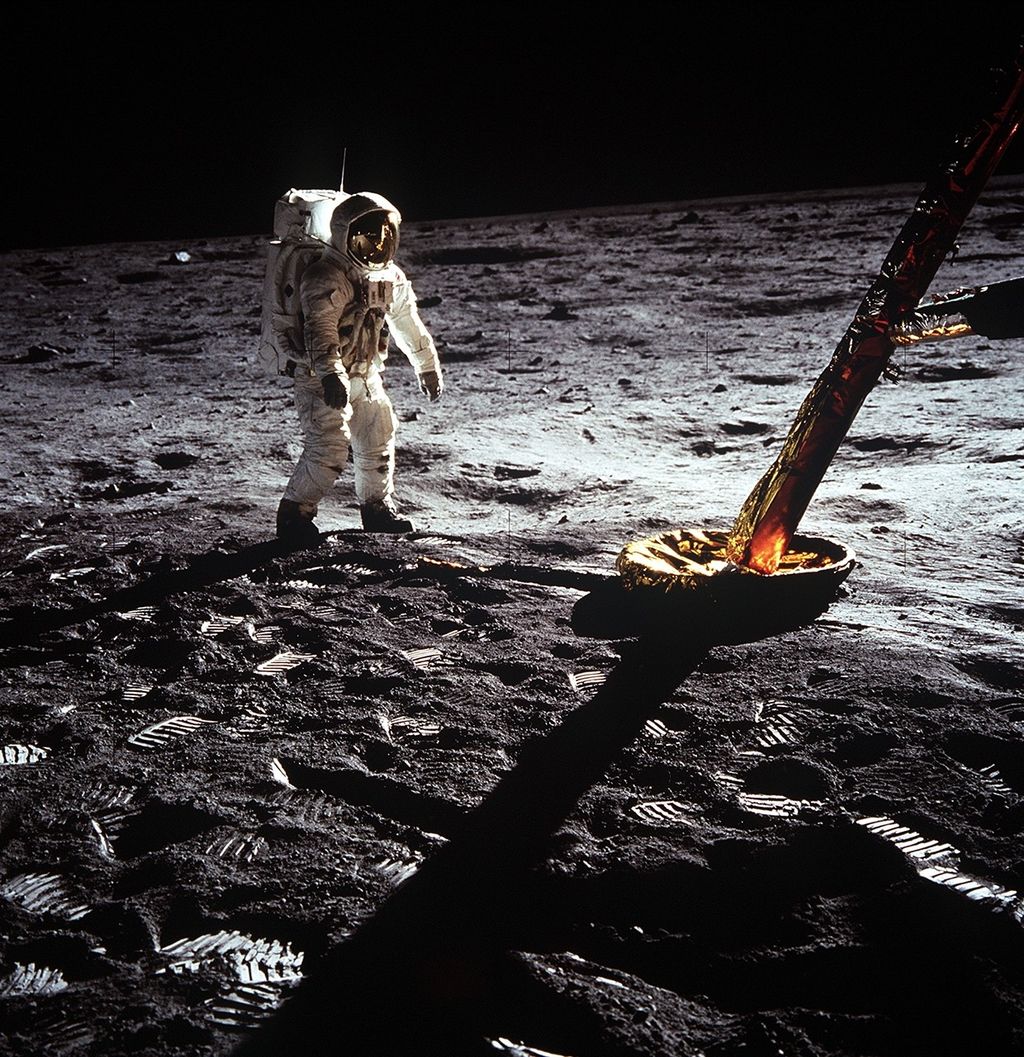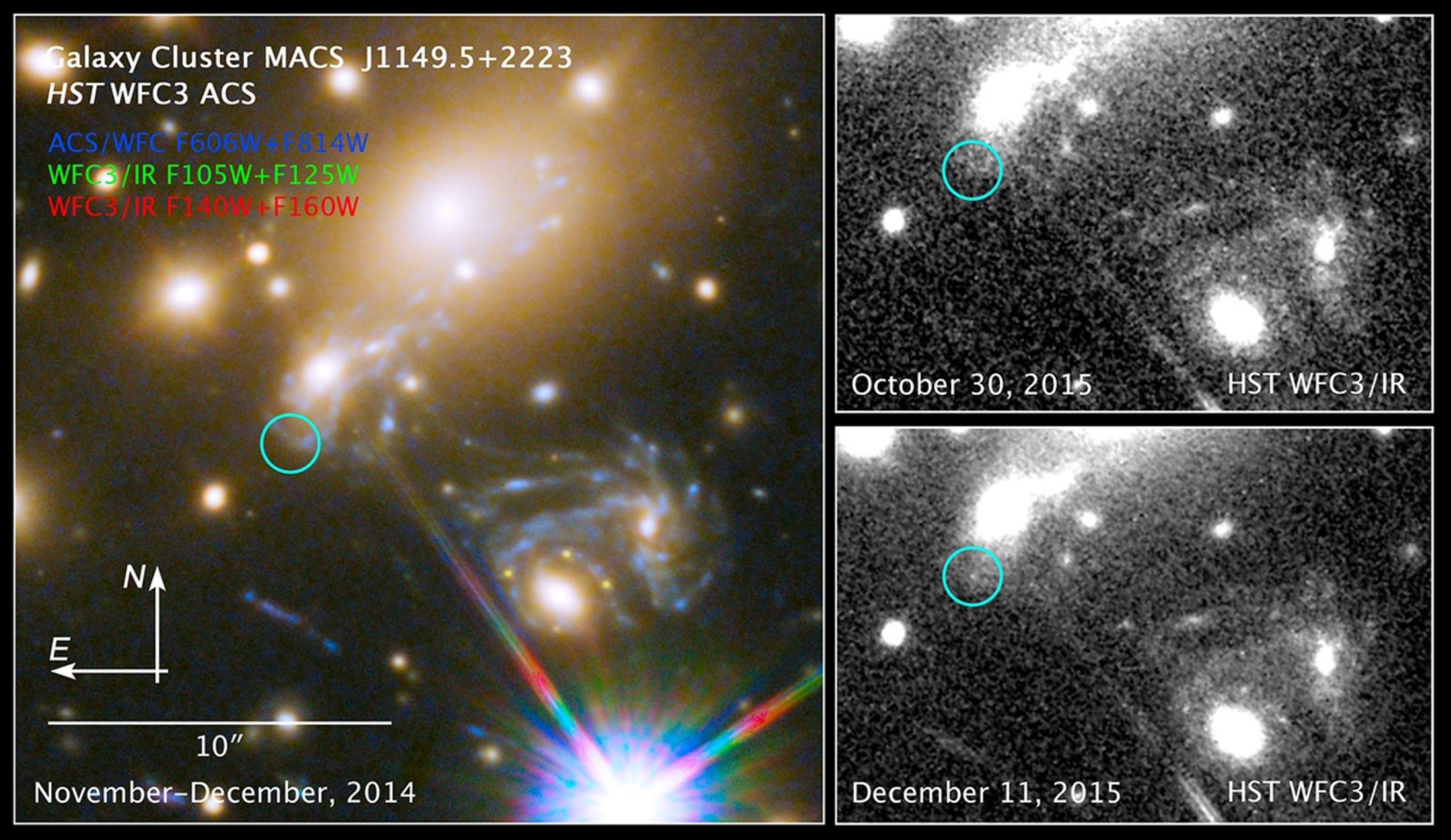1 min read
Galaxy Cluster MACS J1149.5+2223

About the Object
- R.A. PositionR.A. PositionRight ascension – analogous to longitude – is one component of an object's position.11h 49m 35.08s
- Dec. PositionDec. PositionDeclination – analogous to latitude – is one component of an object's position.22° 24' 10.94"
- ConstellationConstellationOne of 88 recognized regions of the celestial sphere in which the object appears.Leo
- DistanceDistanceThe physical distance from Earth to the astronomical object. Distances within our solar system are usually measured in Astronomical Units (AU). Distances between stars are usually measured in light-years. Interstellar distances can also be measured in parsecs.9.3 billion light-years or 2.9 billion parsecs (supernova); 5 billion light-years or 1.5 billion parsecs (cluster)
About the Data
- Data DescriptionData DescriptionProposal: A description of the observations, their scientific justification, and the links to the data available in the science archive.
Science Team: The astronomers who planned the observations and analyzed the data. "PI" refers to the Principal Investigator. - InstrumentInstrumentThe science instrument used to produce the data.HST> ACS/WFC, and HST>WFC3/IR
- Exposure DatesExposure DatesThe date(s) that the telescope made its observations and the total exposure time.November 3, 2014 - December 14, 2014
- FiltersFiltersThe camera filters that were used in the science observations.ACS/WFC: F606W+F814W, WFC3/IR: F105W+F125W, WFC3/IR: F140W+F160W
- Object NameObject NameA name or catalog number that astronomers use to identify an astronomical object.SN Refsdal, MACS J1149.5+2223
- Object DescriptionObject DescriptionThe type of astronomical object.Reappearance of Gravitationally Lensed Supernova in Cluster MACS J1149.5+2223
- Release DateDecember 16, 2015
- Science ReleaseCaught in the Act: Hubble Captures First-Ever Predicted Exploding Star
- CreditNASA, ESA, and P. Kelly (University of California, Berkeley); Acknowledgment: NASA, ESA, and S. Rodney (University of South Carolina) and the FrontierSN team; T. Treu (UCLA), P. Kelly (UC Berkeley) and the GLASS team; J. Lotz (STScI) and the Frontier Fields team; M. Postman (STScI) and the CLASH team; and Z. Levay (STScI)

This image is a composite of separate exposures acquired by the ACS and WFC3 instruments on the Hubble Space Telescope. Several filters were used to sample broad wavelength ranges. The color results from assigning different hues (colors) to each monochromatic (grayscale) image associated with an individual filter. In this case, the assigned colors are: Blue: F606W+F814W Green: F105W+F125W Red: F140W+F160W

Related Images & Videos

Supernova Refsdal and Galaxy Cluster MACS J1149.5+2223
This image composite shows the search for the supernova nicknamed Refsdal using NASA's Hubble Space Telescope. The image to the left shows a part of the deep-field observation of the galaxy cluster MACS J1149.5+2223 from the Frontier Fields program. The circle indicates the...
Share
Details
Claire Andreoli
NASA’s Goddard Space Flight Center
Greenbelt, Maryland
claire.andreoli@nasa.gov

































